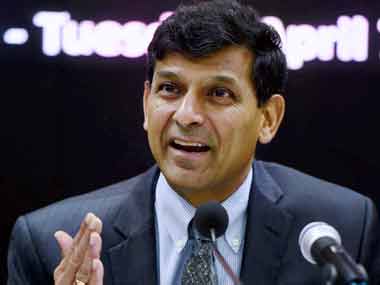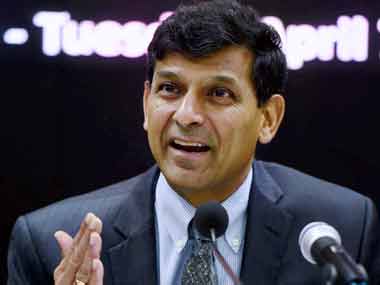Before Raghuram Rajan and After Raghuram Rajan — for a large section of the Indian liberal right, their support for Narendra Modi and his government will be divided into these two phases. This will also be the watershed for the relations between the liberal, pro-market right wingers and the Hindutva right wingers (the divisions are not completely watertight); the wary mutual tolerance will increasingly revert to the mutual suspicion and dislike of earlier times. The pyrotechnics surrounding Raghuram Rajan’s exit from the Reserve Bank of India (RBI) governorship has resulted in a deep disappointment and disillusionment among the liberal right wingers for Modi. They saw the intemperate attacks by Subramaniam Swamy on Rajan as much an attack on the institution of the central bank as on Rajan as a person. And they found Modi’s silence and failure to rein in Swamy extremely puzzling. No, all of them are not blind fans of Rajan; many were highly critical of his policies and actions, whether on interest rates or a public debt management agency or the restructuring of the RBI and, yes, even his utterances as a `public intellectual’. Certainly, a lot of them did not believe that the Indian economy would collapse with Rajan’s exit and were deeply embarrassed by over-the-top utterances on these lines by respected journalists and India Inc. worthies. They recognised that the appointment of the RBI governor was the prerogative of the government of the day. But the circumstances of Rajan’s exit has meant a sea-change in their stand on Modi. As this writer has argued before, the divisions between the liberal right wing and the Hindutva right wing was quite stark (barring their common dislike for all left wingers) and each was sneery about the other. Modi proved to be a sort of common rallying point for both, though for different reasons. A large section of the liberal right wingers were quite taken up by Modi’s open advocacy of market-oriented reforms and talk of minimum government. They were willing to cut him some slack on several issues and even came to his defence strongly whenever the Slob (secular-leftist outrage brigade) selectively hyper-ventilated about real or manufactured controversies. They did not completely absolve him of responsibility over the 2002 Gujarat riots during his chief ministerial tenure, but equally, they definitely did not buy into the mass-murderer narrative that the Congress and Slob put out. There was a minority section that was, however, more aligned with the Slob where Modi and the BJP was concerned. [caption id=“attachment_2843970” align=“alignleft” width=“380”]  A file photo of Raghuram Rajan. PTI[/caption] For more than a year after Modi’s election, the pro-market liberal right remained highly supportive of his government. For good reason. The government made all the right moves on the economic front: good, high-performing ministers were put in charge of crucial economic ministries; there was a lot of focus on ease of doing business, movement on reforming the flawed land acquisition law (which became a victim of parliamentary arithmetic), on the goods and services tax (GST), bankruptcy law; serious subsidy and welfare delivery reform got under way, as did agricultural marketing reform. Crony capitalism appeared to be under a systematic attack. The government’s diplomatic successes were celebrated. Frequent outrages by the Slobs were shown up to be manufactured or motivated. Yes, disappointment did start to set in. The minimum government promise was more of rhetoric and was overly focussed on cutting processes or putting them online than a fundamental shift in the role of the state. There was no movement on privatisation of public sector undertakings. The tax bureaucracy continued to run amok. The nanny state approach continued in many areas. There was dismay over quality of people appointed to several institutions as well as Modi’s failure to rein in the cultural bigots and other Hindutva hotheads. But these did not go beyond loud murmurs and the government was generally defended against attacks by the mushy liberals and leftists. After ten years of a socialist-in-spirit government, the current dispensation seemed like a breath of fresh air. With ‘RRexit’, all that has changed. Because the manner in which it happened is perceived as an attack on the institution of the RBI. Even by those who were not entirely in agreement with Rajan’s policies. The liberal right does not buy the argument that Swamy is a lone ranger, an unguided missile whom no-one can control. Modi and his supporters, after all, encourage the impression of a man on top of things all the time, a leader who micro-manages a lot of things. How, then, the liberals ask, can such a man claim helplessness in controlling the public utterances of one man, especially when it involved as senior a position as the governor of the central bank? ‘Worrying’, ‘disturbing’, ‘shaken’ are some of the words being used to describe the liberal right’s reaction to la affaire Rajan. The support for Modi and his government, which was always nuanced and not unqualified, is now far more grudging and helpless and stems from a genuine fear of a return of the Congress-left ecosystem. Even if the Modi government continues with big bang economic reforms, the liberal right will continue to be a very cautious supporter. They had been highly critical of the systematic attack on institutions from the Indira Gandhi era and will not be able to bring themselves to support a government which does the same. If the liberal right’s honeymoon with Modi is coming under strain, the tenuous alliance with the Hindutva right (a large section of which is comprised of Swamy’s fans) is almost at breaking point. Modi was the only common point between the two groups; the liberal right had been openly and vociferously critical of the Hindutva right’s confrontational stand on cultural and social issues – beef ban, conversions, intemperate statements against ideological opponents. The divide has only increased now. The Hindutva right insists Swamy’s tirade against Rajan are justified and dubs even nuanced statements on Rajan’s performance as stemming from hero-worship, if not a hidden agenda which is part of an international conspiracy. The liberal right is still keeping away from the mushy liberals and the left, but it does not seem inclined to move closer to the Hindutva right. Last November, this writer had argued for the two hues of the right to come together to form a right-wing rainbow; that possibility seems very distant now. Of course, the Hindutva right will ask who needs the support of the liberal right any way. It will certainly be correct in pointing out that this section does not matter for very much and that its influence does not spread beyond urban elites and the English-language media, that Modi’s electoral fortunes did not – and will not – depend on this section. But once again this section will be left without a political voice.
Before Raghuram Rajan and After Raghuram Rajan — for a large section of the Indian liberal right, their support for Narendra Modi and his government will be divided into these two phases.
Advertisement
End of Article


)

)
)
)
)
)
)
)
)



